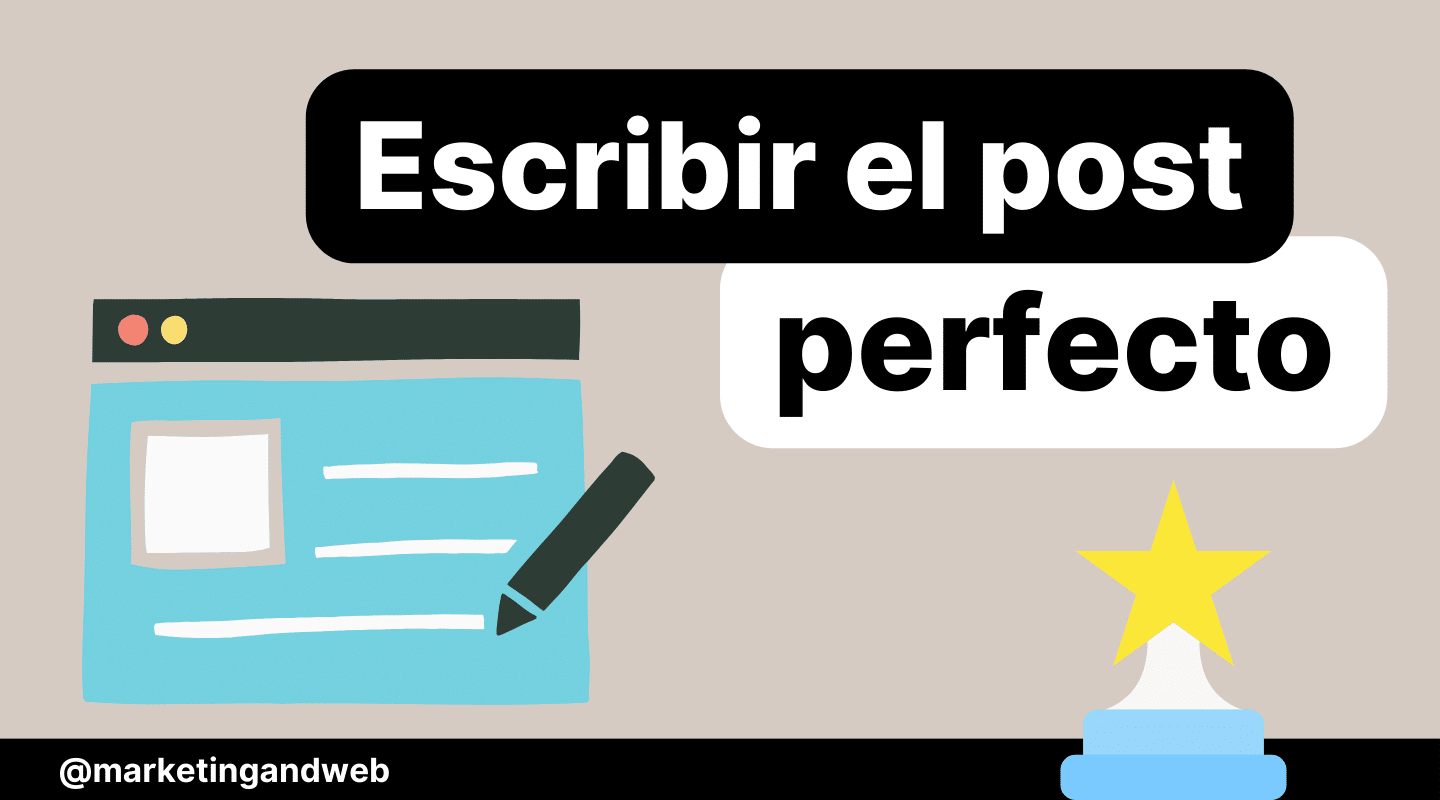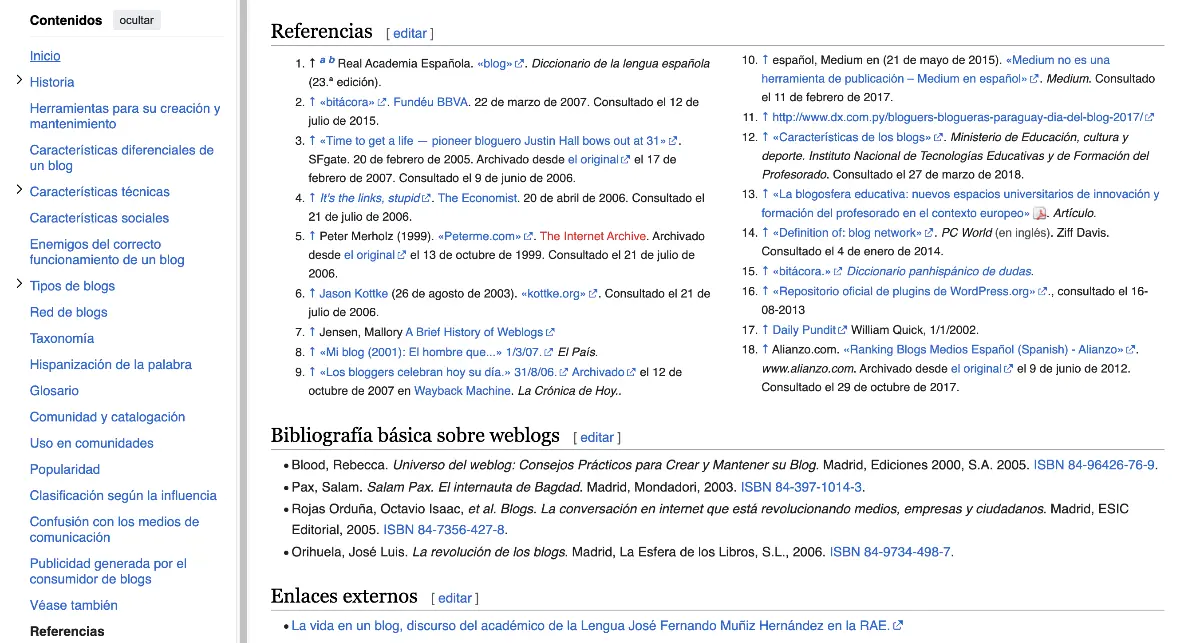
There are currently more than 250 million public blogs on the Internet, according to Wikipedia. This figure could be even higher if we take into account corporate websites and the rise of digital media.
For this reason, it is essential to focus on making the perfect post for your blog and that you can stand out from others.
Throughout this article I am going to give you the most important recommendations so that your blog can be successful and more people read its content.
Choose a topic relevant to your topic
The first step to make a perfect post is that Your content is of interest to your audience.
There is no point in spending hours and hours writing an article if it really doesn’t interest anyone. It will be wasted time.
Imagine that you know a lot about whale feeding, but few others are interested, nor do they search much on Google. This will mean that, no matter how good your article is, no one will read it.
For this reason it is very important to do keyword research, i.e. Identify which are the most searched terms on Google about your topicto verify that they have a certain popularity.
Documentation phase
The documentation phase is a crucial step in the content creation process for a blog, as it ensures that the post is informative, accurate and valuable for the reader.
To do this, you must search for information:
- Relevant to the objective of the article.
- Updated as of the current date, or whichever date it should correspond to.
- From reliable sources, such as government institutions, field studies or scientific journals.
Some interesting resources to document yourself with some reliability are:
- Academic Googlewhere only information with journalistic or scientific rigor is published.
- The Wikipedia references and bibliographies, to investigate the sources of said content. That is, not sticking with what Wikipedia says about something, but rather reviewing where the information was obtained from to go deeper into each reference.


Finally, to increase the trust that the reader places in your content, it would be a good idea link at the end or during the article to authoritative sources on which you have based to write the post.
This way, the reader will be reassured that you have not invented any data, and that everything is based on facts or reliable field studies.
Write a short introduction that encourages reading
A brief introduction that encourages reading is essential for capture your audience’s attention in the first lines.
To accomplish this goal, start with a hook that intrigues or surprises. Could be:
- A provocative question: “Are you tired of publishing and no one reading your articles?”
- A shocking statistic: “Did you know that there are more than 250 million blogs in the world?”
- A relevant personal anecdote: “The other day I published an article that went viral, and reached more than 10,000 views in 24 hours. Do you want to know how I did it?”
- An inspiring quote: “They say that sometimes effort goes unnoticed. But the result is always visible.”
- A promise: “I’m going to show you how you can write an article that can be read by thousands of people.”
This element should be closely related to the main topic of your post and designed to spark curiosity.
The goal is for the reader you feel almost obliged to continue reading to satisfy that initial curiosity or learn more about the topic presented.
In addition to this, avoid getting bogged down in the introduction, because this could bore and saturate the reader. It is better to be clear and concise, with a presentation of just two or three paragraphs.
Organize content in a heading structure
Start by dividing your topic into subtopics or main sections that will guide the reader logically.
Each of these subtopics should be represented by a heading that clearly summarizes the content of the section.
This not only helps readers anticipate what they are going to read next, but also allows them to skip to the parts that interest them most if they are looking for specific facts.
As for headings, you should follow a hierarchical structure.
For example, you can use headers level 1 for the title of the article, a level 2 for subsectionsand a level 3 for details or specific aspects within those subsections.
If you use WordPress, you will find that these levels are represented with an “H” (for “headings”, in English), and with them you will be able to carry out this hierarchical organization.
Another recommendation on this is Incorporate relevant keywords into your headings.
This will improve the readability and SEO of your article. By doing so, you’re telling Google and other search engines what you’re talking about, which can help improve your ranking in search results.
Include useful images or multimedia content
Images, videos, infographics and other visual elements They will help you understand the post, as well as offer a visual break in the middle of blocks of text.
Images must:
- Weigh little. If they weigh more than 200kb, use online image compression tools to make them load faster on your website.
- Include alt text with a brief description of the image. If you use WordPress, for example, you can add this field when uploading an image to the platform.
- The image file name must also be descriptive. For example, avoid naming them “212pfkd.jpg,” and instead use something like “digital-marketing-plan.jpg.”
- See yourself in high quality. Otherwise, it could hurt the perceived quality of the item overall.
- Have all copyrights. If you use your own images or copyright-free image banks, you will avoid having legal problems in the future.
With this, you will have the perfect foundation for optimizing your images.
On the other hand, remember that sometimes it is also useful embed social media posts such as Twitter/X, Instagram or TikTok.
If your content is based on something you have seen on these social networks, or you think that a content creator has published something that may be of interest to your post, embed it so that all your readers can see it.
Add internal links to related articles
When you mention something you’ve already covered before, put a link to that article.
This allows your readers to learn more about a topic without having to leave your blog, increasing dwell time and making it easier for Google to crawl throughout all sections of your website.
Links should fit naturally into your text, so that when reading, your visitors know what to expect when they click on them.
For this reason, you must avoid linking using generic texts like “click here”, or “see more”, since they are not descriptive, and yes do it with keywords such as “this guide on SEO”, “this article on how to create a blog”, etc.
Don’t forget to check your links from time to time. As your blog grows and you have more content, you will find new opportunities to link articles together.
And connecting your URLs in this way will keep your blog alive and will be more attractive to both your readers and search engines.
Write a title with keywords that arouses interest
The title of your post must include keywords and arouse interest of your readers. In this way, we are telling Google what keywords it should position us for, and those who see us will be tempted to click on our blog.
Questions, lists, and promises of solutions to common problems are effective formats that often generate interest. For example:
- “How to achieve X in 5 simple steps”
- “The 10 best secrets for Y”
- “How to make Z: the most complete guide, step by step”
They are titles that focus on keywords (X, Y, Z), and that in turn generate intrigue to encourage people to click on our result.
Spend time promoting the post
It’s no use if we write a fantastic post if we don’t know how to communicate it later, or what channels or media I should use.
We need to reach the greatest number of people possible and in turn those people who liked our post, share it and distribute it to their followers, having a good presence and influence on social networks.
Yes, it is important adapt the message to each platform.
For example, on LinkedIn you can focus on the professional or educational aspect of the post, while on Instagram you could use an eye-catching image with a brief summary of the content.
In addition to this, if you have a newsletter with many subscriberstake advantage of it to notify them that you have uploaded a new article that could be of interest to them.
Now that we have reviewed the most important aspects to make a quality post that gets readers, are you missing any more aspects to include on the list?
SEO Podcaster at Campamento Web, the most listened to SEO news and interview program in Spanish. Graduated in Communication from Loyola University, teacher and SEO consultant, he has focused his areas of specialization in the field of communication and web positioning for more than 10 years.
Source: https://www.marketingandweb.es/marketing/post-perfecto/


